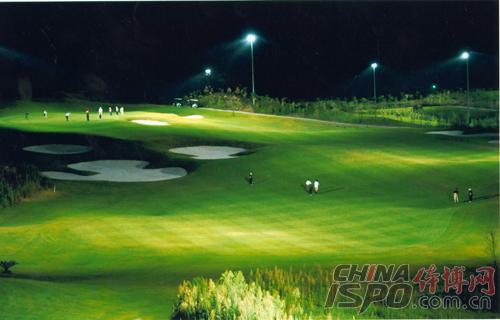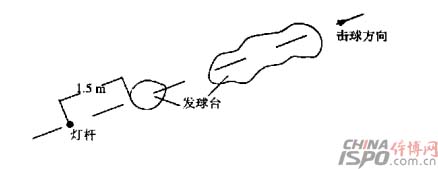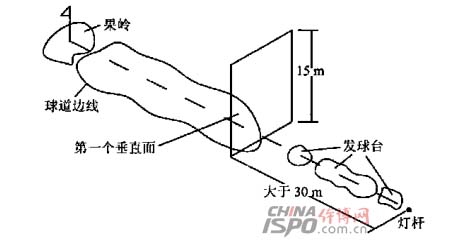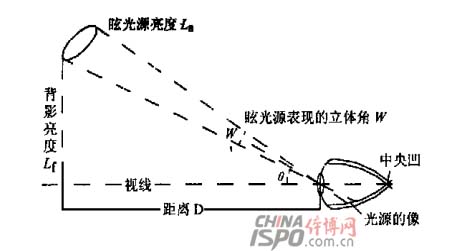The illuminance requirements of lighting golf course lighting, light source selection, lamp selection, lamp pole arrangement, and power supply and distribution design points are described. Let the course light up so that the players can play at night as well as in the daytime. This is the purpose of the lighting golf course.

To play golf at night, there must be sufficient illumination to illuminate, which places very high demands on golf course lighting. Illumination golf course lighting requirements are different from other sports field lighting. The issues to be considered are different from other sports fields. The golf course is large, many times larger than other sports fields, and divided into many fairways. For a golf course with a par 72, there are 18 fairways and 18 holes; in addition, the fairway’s The direction is basically one-way, and the adjacent fairways are mostly unidirectional, and the topography of the fairway is varied in variety and ups and downs, making the positioning of the light pole, the type of light source, and the light projection direction of the light fixture distinctly different from other sports fields. It seems more complex and more challenging to design. This article mainly elaborates on lighting design and lighting power supply.
Lighting design
Golf is an outdoor sport that makes full use of space. People walk on the grass and the ball flies in a space of 10,220m. Therefore, when considering the lighting of a stadium, not only the illuminance of a golfer's walking but also the ball should be considered. The illuminance of the time, more importantly, is to make the light of the court space as much as possible relevant to the space above the court, and not to make the sphere dim. In other words, flood lighting is used, with one or more large area light sources, or small light sources from multiple directions, so that the lighting light is soft and satisfies the visual requirements of the golfer, so that it is under the light and in the sun Like to be able to swing.
In a golf course, a hole is mainly composed of three parts: a tee, a fairway, and a green. Among them, the fairway includes BUNKER, POOL, BRIDAGE, SLOPE, HILLS, LONGGRASS and CARPATH. Due to the different design styles of each stadium, the layout of these parts in the course is not the same. In addition, bunkers, water hazards, and long grass areas are defined as court obstacles in the “Golf Rules.†They will give golfers a sense of challenge, and night lighting must also properly consider them in order to facilitate their own use. Due role. Appropriate lighting arrangements can also increase the fun and challenge of playing golf at night.
For each hole, the tees are the primary area. The lighting designed here should try to make the ball and the end of the driver well visible to the left or right hand. The horizontal illuminance is generally required to reach 100 to 150 lx, and the lamp is mainly based on a wide-distribution floodlight, illuminating as much as possible from two directions, avoiding the shadow of the sphere, the club, or the player falling in the direction of the sphere or hitting the ball. On, affect the player's vision.
When installing, the lamp pole is often installed at the back edge of the tees at least 115m. For larger tees, multi-directional lights are required (Fig. 1). The mounting height of lighting fixtures on the tees should be greater than or equal to half of the total length of the tees, but not less than 9m. The installation practice shows that increasing the installation height will effectively improve the lighting effect of the tees. For example, lighting with 14m high poles will have much better results than using 9m low and middle pole lighting.

Fig. 1 Tee and pole
The fairway portion of each hole, due to its location, makes full use of the existing terrain, blends in with the natural landscape, and its width varies according to the difficulty of the hole design, ranging from 32 to 55m. The average width is about 41m. The curve around the perimeter of a typical fairway forms a curve, and it is the widest in the falling ball area. Therefore, for the lighting design of the fairway, it is considered to use a narrow-distribution floodlight to track lighting from both sides to ensure sufficient vertical illuminance. The related vertical plane refers to a facade perpendicular to the centerline of the fairway. The width is the total width of the fairway at that point. The height is about 15m above the centerline of the fairway. This vertical plane is located at the midpoint of the two light poles of the fairway. Practice has shown that if these vertical planes are selected in the falling ball area, the impact on the ball is better.
According to the technical requirements of Japanese Illumination Standard (Z9110, 1997 edition) and THORNLIGHTING, the horizontal illuminance of the fairway part is required to reach 80-100 lx, and the vertical illuminance is required to reach 100-150lx, and in any vertical direction On the surface, the ratio of vertical illuminance to minimum illuminance should not be greater than 7:1 (Figure 2). When the ball is running at a speed of 100kmöh or higher, the vertical illuminance of the fairway is sufficient to allow the player to see the entire flight of the ball until it sees its ball drop point. That is, the lighting illuminance set on the fairway must guarantee the ball. The ball that the hand hits from the tees can be tracked. For this purpose, the pole of the first vertical plane from the teeter should be not less than 30m. The distance between the poles must be combined with the light distribution characteristics of the selected luminaire. And the topography of the light poles is taken into consideration. The minimum installation height of the luminaire is 11m from the base of the pole, and it should be installed in the falling area of ​​the ball or the bend of the fairway as much as possible to reduce the number of luminaires and poles, thus saving investment; if the pole is located in a special terrain, the installation height Consider increasing or decreasing accordingly. Therefore, in order to reduce the influence of the terrain, the light poles are generally installed along a ball lane or in a higher area.

Figure 2 Fairway Lighting
The other part of the fairway, ie, the site obstacle area, such as the bunker pool, the bridge, etc., should also consider certain illumination illuminance, which can be between 30 and 75lx to ensure that the golfer hits the ball in these areas. You can also hit the ball again. At the same time, properly designing these local lighting fixtures can also add some charm to the night court.
The golfer hit the ball through the fairway, hitting the ball to the green, pushing the ball into the hole and completing the hole. Green, as the end of the hole, the terrain is generally higher than the fairway, and its horizontal illuminance is very demanding. Generally, the requirement is between 200 and 250 lx, and the ratio between the maximum horizontal illumination and the minimum horizontal illumination is not greater than 3:1. You can push the ball from all directions to the hole in the green. Therefore, design the lighting in the green area to have at least two directions of illumination, to minimize the shadow (Figure 3). The light poles are installed in the shaded area of ​​40 degrees in front of the green area, and the distance between the fixtures is less than or equal to three times the height of the light poles, and the lighting effect is better.

Figure 3 Greens and fairway lighting
When setting up lighting poles, it is important to note that: Lighting does not affect the golfer's shot, and it does not cause harmful glare to the fairway or other fairway players. This is very important. The forms of glare include direct glare, reflected glare, glare caused by extremely high brightness contrast, glare due to visual discomfort, and the like. For the lighting golf course, the lighting direction of the light is basically set along the direction of the ball. When there is no adjacent fairway, the influence of glare is less. For the adjacent fairway, because of the two-ball hitting In the opposite direction, the light is cast in the opposite direction, and the light adjacent to the fairway will produce a strong glare to the golfer hitting on the fairway. This kind of glare appears in the form of direct glare, which is very strong in the dark sky in the night sky. It will give the golfer a very uncomfortable feeling. Therefore, the influence of glare must be reduced when setting up the lights of adjacent fairways.
In this way, when the same light source is used for the same glare source luminance and background luminance, that is, when the apparent solid angle W of the glare light source is the same, the glare constant G is inversely proportional to the position function P(Η), and P(Η) follows. The increase in the angle of plutonium increases as the glare effect decreases. This means that when the distance between the golfer and the glare light source D is constant, the height of the glare light source is appropriately increased, that is, the angle of the glare is increased, and accordingly, the hazard of glare is reduced. Practice shows that when the light source installation height is 11m or above, the glare of the court can be effectively controlled.

Figure 4 Schematic diagram of glare data
The above mainly describes the layout of stadium poles and how to reduce harmful glare. The following points should be considered in the selection of lighting sources and luminaires.
(1) The use of highly efficient light sources is preferred.
In this manner, when the same illuminance is achieved, the number of light sources required can be reduced, thereby reducing the material cost and installation fee of the electrical circuit, that is, reducing the initial investment.
(2) Select a light source with high color rendering and high color temperature.
According to field practice, a metal halide lamp with a color rendering index of Ra>90 and a color temperature of 5500K or more will reproduce the appearance of the stadium, such as the primary colors of lawns, spheres and other objects.
(3) Use light sources with good control characteristics.
(4) Use light fixtures matching the light source.
That is, the structure and type are matched, and the specifications are matched with the power of the light source.
(5) Select lighting fixtures for the environment.
As the lighting fixtures of the stadium are installed in outdoor open spaces, when the lamps are selected, the degree of protection of the lamps against foreign objects and water and the degree of protection against electric shock must be fully considered. Generally choose protection grade IP55 and electric shock protection grade grade. In addition, the corrosion resistance of the lamps must also be considered in conjunction with the local atmospheric environment.
(6) Use lamps that can reasonably use the light distribution curve.
In order to improve the light efficiency and reduce the power consumption, it is also required that the lamps should have good light distribution and reduce the hazard of glare.
(7) Choose economical lighting fixtures and light sources with low operating costs.
Mainly from the lamp utilization factor, lamp and light source life, as well as the lamp maintenance factor and other considerations.
(8) Selection of poles.
Now there are several types of fixed, upright, pneumatic lift and hydraulic lift. How to use it should be considered in conjunction with the stadium environment and the economic strength of the investment operator, so as not to affect the environment of the stadium and ensure the natural beauty of the stadium.
2. Lighting supply
Excellent stadium lighting design must have a good lighting power supply system to ensure. The stadium lighting power supply system mainly considers from the following aspects.
(1) The power source for stadium lighting can be imported from the urban grid, or it can be supplied by the captive power generation group, depending on the specific conditions of the stadium; It is recommended to use the urban power network as much as possible, which will greatly reduce the future operating costs. If there is a huge investment in the equipment that cannot be used in the urban power grid or the power supply line, self-provided generator sets can be used to provide power, and the generator set should be as close as possible to the load center. In general, the court lighting is based on the unit of the fairway light. The lighting load center of each fairway can be initially set in the middle section of the fairway. The total lighting load of the court is best among several fairways.
(2) Three-phase four-wire power supply should be preferred for the power supply mode to reduce the power consumption, and the pulsation of the luminous flux of the gas discharge lamp (eg, metal halide lamp, etc.) can be reduced, further improving the lighting quality of the court.
(3) Combining the advantages of golf course environment and power supply, three-phase four-core cable is preferred for distribution lines, and steel wire armored cable is preferred. This is because a large part of the golf course is artificially formed by pushing soil. The cables are often laid underground. The cables may be displaced during the later construction. Therefore, steel wire armored cables are used to increase the safety and reliability of power supply. Sex; Some cable construction schemes are used for cable trenches, laying tunnels, or laying pre-embedded pipes. Although the initial investment will be larger, it will be more convenient for future maintenance. Regardless of the form of cable laying, the construction process must be well coordinated with other construction units (such as stadium irrigation expertise, stadium modeling, and greening) to ensure the successful completion of the installation of the power supply system. The power supply system is safe and reliable.
(4) Since the golf course has a large area and the line between the power point and the load is long, when selecting the cable, the two important operating parameters of the line voltage loss and the long-term allowable ampacity of the cable should be given priority. If the line is too long and the voltage loss is large, you may consider using a step-up transformer to boost the voltage. When choosing, also fully consider the impact of changes in ambient temperature, the parallel coefficient of the cable, and the thermal resistance of the soil, etc., and correct according to the actual environment laid. If the selected cable is not a standard section, it should be selected according to the upper limit.
(5) Lighting circuits in lighting stadiums should be considered for short-circuit protection. Generally, fuse protection or automatic air circuit breakers should be used.
(6) To prevent electric shocks and ensure personal safety, the illuminators, switches, sockets, step-up transformers, metal shells of the switchboard, brackets, metal jackets of steel pipe cables, and metal towers must be well grounded. In general, the grounding resistance of each metal tower should not exceed 308.
(7) Control of lighting circuits can use timing control and split-track control. The purpose of split-track control is to achieve the maintenance and management requirements by centralizing remote-controlled lines to control the switching of power switches.
(8) If the pole selection is telescopic, that is, it requires power to go up and down, then the voltage should be fully considered. It must be ensured that the voltage at the terminals of the lifter motor is not less than 90% of the rated voltage.
Food Waiter Robot:
Food Waiter Robot is multifunction robot for restaurant, hotel. Our company has many different kinds of robot. Such as humanoid robots , raill robots and trackless robots. Their main function is to deliver food to customers. They can replace the traditional waiter, save labor costs, bring good economic benefits, Widely used in specialty catering industry, children's theme venues, leisure and entertainment venues.
Food Waiter Robot,Food Waiter Robotics,Food Waiter Robots,Food Waiter Robot Dog
Henan 1st Century Robot Co., Ltd. , https://www.waiterrobot.nl